How Have We Depicted Madness Through History
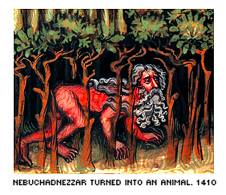
Lives in the Asylum

A collection of four stories gathered on the Longreads blog site.
1. "Something More Wrong" (Katherine B. Olson, The Big Roundtable, July 2013)
2. "Mentally Unfit" (Zachary McDermott, Gawker, April 2014)
3. "My Lovely Wife in the Psych Ward." (Mark Luckach, Pacific Standard, January 2015)
4. "Mr Bad Weekend" (Alan Hanson, Matter, January 2015)
What Happened to the Girls in Le Roy?
| "Before the media vans took over Main Street, before the environmental testers came to dig at the soil, before the doctor came to take blood, before strangers started knocking on doors and asking question after question, Katie Krautwurst, a high-school cheerleader from Le Roy, N.Y., woke up from a nap. Instantly, she knew something was wrong. Her chin was jutting forward uncontrollably and her face was contracting into spasms. She was still twitching a few weeks later when her best friend, Thera Sanchez, captain of one of the school's cheerleading squads, awoke from a nap stuttering and then later started twitching, her arms flailing and head jerking. Two weeks after that, Lydia Parker, also a senior, erupted in tics and arm swings and hums. Then word got around that Chelsey Dumars, another cheerleader, who recently moved to town, was making the same strange noises, the same strange movements, leaving school early on the days she could make it to class at all. The numbers grew--12, then 16, then 18, in a school of 600--and as they swelled, the ranks of the sufferers came to include a wider swath of the Le Roy high-school hierarchy: girls who weren't cheerleaders, girls who kept to themselves and had studs in their lips. There was even one boy and an older woman, age 36…" |
Treating Brain Injuries: The Work of Occupational Therapists
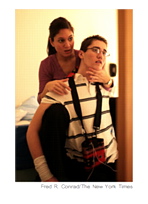
Over the last couple of weeks, I've finished reading two books about the experience of brain injury and this article reminded me of many issues raised in those personal memoirs. The first book, Where Is The Mango Princess? (Crimmins, 2000) offers a harrowing portrait of the realities of brain injury in the lives of a middle-aged husband and father, Alan, his wife, Cathy (the author), and their child, Kelly. Cathy's rage against the horrors of the insurance industry and the regular but heartless denial of benefits to its policy holders could hardly be better described. More subtle and personal is the 1998 autobiographical narrative of Dr. Claudia Osborn, called Over My Head: A Doctor's Own Story of Head Injury from the Inside Looking Out. Osborn is a medical internist, originally practicing in an inner-city hospital in Detroit, Michigan whose brain injury brought her to New York City's NYU-Rusk Institute of Rehabilitation Medicine and its famous Head Trauma Program (HTP) directed by Dr. Yehuda Ben-Yishay. From the first-person perspective that Osborn adopts, she weaves a powerful tapestry of the multiple and elusive problems, particularly inattention & adynamia, that TBI survivors like herself must confront and cope with. I'd be remiss if I didn't also mention a book I read in a pre-publication version about six years ago. The volume, Rescuing Jeffrey: A Memoir, was written by Richard Galli, the father of the 17-year-old boy who dove into a pool and hit his head. The effect was a disabling spinal cord injury and a perilous journey through medical and rehabilitation crises for both Jeffrey and his family. It is essential, I think, to come to grips with the experiences portrayed in books and articles like these if we wish to understand how different life becomes after injury to the central nervous system.
Target Link: Hoffman, J. (2008, January 15). Coaching the comeback. New York Times. Downloaded January 15, 2008 from the New York Times website.
References
- Crimmins, Cathy. (2000). Where is the mango princess? New York: Knopf. ISBN: 0375404910 (hardcover) 0375704426 (pbk)
- Galli, Richard. (2000). Rescuing Jeffrey: A memoir. New York: St. Martin's Griffin. ISBN: 1565122704 (hardcover) 0312283407 (pbk)
- Osborn, Claudia L. (1998). Over my head: A doctor's own story of head injury from the inside looking out. Kansas City, MO: Andrews McMeel Publishing. ISBN: 0836254198 (hardcover) 0740705989 (pbk)
- Dr. Claudia Osborn's Personal Website
Denial Is Certainly More Than a River in....So Say The Psychologists

The New York Times has a thought-provoking article today by Benedict Carey on the role of denial in the daily social lives of ordinary people. So much more than the relatively primitive defense mechanism described by Freud and his adherents, denial appears to be central to the ways in which our social lives are rendered tolerable. The crucial summary in Carey's article notes
I could not help but be struck by the way in which this article suggests in preliminary fashion an understanding of how scandals may arise among those in positions of authority or by those who "should have known better." I am thinking both about what goes on in the political world as well as the religious one as well. The doleful news that the Jesuits in the Oregon Province have just agreed to a $50 million settlement for the abuse that went on in the Alaskan mission during the past forty or so years is haunting. The painful reality that the victims experienced seems so obvious now that a final explanation of malice and sheer injustice by Jesuit superiors seems almost inescapable. But, if the work cited by Carey here among social psychologists is accurate, then a more nuanced understanding may eventually begin to emerge to explain the failure of the Church and its superiors in this horrendous scandal. Toward the end of his report, Carey summarizes: "In short, social mores often work to shrink the space in which a conspiracy of silence can be broken: not at work, not out here in public, not around the dinner table, not here. It takes an outside crisis to break the denial, and no one needs a psychological study to know how that ends." This seems like something that we'll need to think about very hard in the years ahead.Yet recent studies from fields as diverse as psychology and anthropology suggest that the ability to look the other way, while potentially destructive, is also critically important to forming and nourishing close relationships. The psychological tricks that people use to ignore a festering problem in their own households are the same ones that they need to live with everyday human dishonesty and betrayal, their own and others’. And it is these highly evolved abilities, research suggests, that provide the foundation for that most disarming of all human invitations, forgiveness. In this emerging view, social scientists see denial on a broader spectrum — from benign inattention to passive acknowledgment to full-blown, willful blindness — on the part of couples, social groups and organizations, as well as individuals. Seeing denial in this way, some scientists argue, helps clarify when it is wise to manage a difficult person or personal situation, and when it threatens to become a kind of infectious silent trance that can make hypocrites of otherwise forthright people.
Reference
Carey, B. (2007, November 20). Denial makes the world go round (Electronic version). New York Times. Retrieved from http://www.nytimes.com/2007/11/20/health/research/20deni.html?ex=1353301200&en=d185b9c072a51a1f&ei=5124&partner=permalink&exprod=permalinkHudson River State Hospital
![[Hudson River State Hospital Old Building Drawin]](page0_blog_entry10_1.jpg)
Driving onto the property of the Hudson River State Hospital took visitors into a very different world than the one outside the hospital's stone walls. In the mid-1960s, the patient population living on the grounds of the facility could be numbered in the thousands (at its height, the hospital lodged about 9,000 patients in a mostly self-sustained and enclosed "total institution" as Erving Goffman would have termed it). As our car wound its way past the older buildings on the campus (the picture to the upper left is a drawing of the original "Kirkbride" building at HRSH), we would see many groups of patients being led from one place to another by staff members while, in other spots, patients were sitting in chairs or on benches simply staring out at whatever could be found nearby. It was, I recall, a very quiet environment and few of the mostly older and dilapidated-looking residents seem to speak at all to anyone nearby. Nonetheless, the grounds went on and on and occupied many tree-filled acres.
Psychologist Michael Britt, Ph.D. offers a glimpse into the Hudson River State Hospital (HRSH, later renamed the Mid-Hudson Psychiatric Center), in a recently-posted podcast interview on his website, The Psych Files. Dr. Roger Christenfeld, Research Director at a drastically-smaller current facility, discusses the history and therapeutic work of the HRSH in his interview with Britt. During 33 minutes, Christenfeld provides a glimpse of why the hospital was built and opened in 1869, what life was like for many patients in the late 19th and early 20th centuries, and how the notion of a state psychiatric facility changed profoundly after about 1955.
Target Link: Episode 27: From Insane Asylum to Psychiatric Center: A Brief History (33 minutes, the interview is in mp3 format and can be downloaded to your computer)
Associated Resources
- Historic 51: A website devoted to the history of the Hudson River State Hospital. Includes many images and other information (e.g., a timeline) telling the story of the HRSH
- Kirkbride Buildings: This website has photos of the "Kirkbride" style building at HRSH, a standard form for psychiatric asylum buildings in the 19th century. As the introduction to this site explains: "Once state-of-the-art mental healthcare facilities, Kirkbride buildings have long been relics of an obsolete therapeutic method known as Moral Treatment. These massive structures were conceived as ideal sanctuaries for the mentally ill in the latter half of the nineteenth century. Careful attention was given to every detail of their design in order to promote a healthy environment and to convey a sense of respectable decorum. Placed in secluded areas within expansive grounds, many seemed almost palace-like from the outside. But growing populations and insufficient funding led to unfortunate conditions that spoiled their idealistic promise."
Hooking Teens on Cigarettes in a Flash
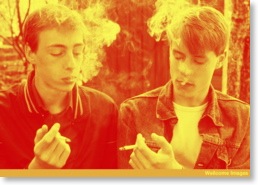
In a new clinical study reported in the July, 2007 issue of the Archives of Pediatric and Adolescent Medicine, the researchers followed 1246 sixth-grade students in Massachusetts for four years. By the end of their study, 217 of their participants reported inhaling while smoking. So, how many of these 10th graders could now be considered dependent on nicotine? Using the "Hooked on Nicotine Checklist" as the measure of loss of autonomy over tobacco and the ICD-10's definition of tobacco dependence, the results were startling. More than half these adolescents (N = 127; 54.5% of smokers) had lost their autonomy over tobacco use and 83 inhalers (38.2% of smokers) were fully tobacco dependent. Further, the speed with which autonomy loss was reached was extremely fast: 10% of these smokers had lost their autonomy within 2 days of beginning to smoke and 25% within the first month of first inhaling. Of those who were tobacco dependent, half had reached that condition by the time they were smoking just 46 cigarettes per month, i.e., one and a half cigarettes per day. The authors conclude
These data ought to speak loud and clear (though I know they won't) to teenagers and young adults who think that a couple of cigarettes every once in a while mean nothing. The ease with which tobacco use hooks its addicts is simply amazing.[t]he most susceptible youths lose autonomy over tobacco within a day or 2 of first inhaling from a cigarette. The appearance of tobacco withdrawal symptoms and failed attempts at cessation can precede daily smoking; ICD-10-defined dependence can precede daily smoking and typically appears before consumption reaches 2 cigarettes per day.
Target article: DiFranza, J. R., Savageau, J. A., Fletcher, K., O'Loughlin, J., Pbert, L., Ockene, J. K., McNeill, A. D., Hazelton, J., Friedman, K., Dussault, G., Wood, C, & Wellman, R. J. (2007). Symptoms of tobacco dependence after brief intermittent use: The development and assessment of nicotine dependence in Youth-2 study. Archives of Pediatric and Adolescent Medicine, 161, 704-710. [Link to abstract]
Newspaper report: Bakalar, N. (2007, July 31). Nicotine addiction is quick in youths, research finds. New York Times [Electronic version]
The image above is Copyright © Wellcome Images, but has been altered into a Derivative Work by the author by a colorization change.
Cannabis & Later Psychosis: The Lancet Meta-analysis
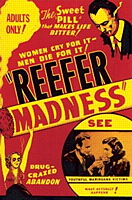
A new meta-analysis published in British medical journal, The Lancet, argues that the use of cannabis is not at all an innocent pleasure. Rather, in a review of the combined results of 35 population-based longitudinal observational studies of the relationship between the use of cannabis and psychiatric disorders in later life, the authors found an overall increased risk of 41% in the development of any psychosis among individuals who had used marijuana in the past. The summary of their findings reports:
These results were so persuasive that the editors of The Lancet editorialized as follows:There was an increased risk of any psychotic outcome in individuals who had ever used cannabis (pooled adjusted odds ratio=1·41, 95% CI 1·20–1·65). Findings were consistent with a dose-response eff ect, with greater risk in people who used cannabis most frequently (2·09, 1·54–2·84). Results of analyses restricted to studies of more clinically relevant psychotic disorders were similar. Depression, suicidal thoughts, and anxiety outcomes were examined separately. Findings for these outcomes were less consistent, and fewer attempts were made to address non-causal explanations, than for psychosis. A substantial confounding effect was present for both psychotic and affective outcomes.
So, has the question been settled? Is it clear that marijuana is a dangerous drug which can cause irreparable harm to its users? It would be stretching the scientific arguments advanced by Moore and her colleagues (2007) to use this study's findings as having settled this question in a definitive way. My reactions to this article include these thoughts:In 1995, we began a Lancet editorial with the since much-quoted words: “The smoking of cannabis, even long term, is not harmful to health.” Research published since 1995, including Moore's systematic review in this issue, leads us now to conclude that cannabis use could increase the risk of psychotic illness. ("Rehashing the evidence...," 2007)
- It is likely that using marijuana increases the risk of psychotic illness in later life for some small percentage of the population. And, since psychotic illness can be quite debilitating and tends to follow a chronic course, the danger may be substantial that some marijuana users are putting their later life in real jeopardy.
- Correlation, as our basic research theories tell us, can never prove causation. All of the studies examined by Moore et al. (2007) were correlational in nature. Further, the additional use of meta-analytic grouping techniques cannot turn correlational data into experimental data no matter how sophisticated the statistics. This means that, while the trends and the thrust of the data seems to make marijuana a very promising explanatory causal factor in the development of some of the psychoses that these research participants developed, such a link has not been conclusively demonstrated. And, while the gross odds ratio speaks of a 41% increased risk, the authors themselves acknowledge the impact of confounding and other variables in lowering the risk percentage in the studies they examined. Hence, we are left without a good estimate of what the actual increased risk might be.
- This last point is related to a fundamental set of questions about causality in the area of drug risk research. The primary question concerns how much the decision to use marijuana (in earlier life) and the development of a psychotic illness (in later life) might BOTH be causally related to an underlying third factor. Might it be possible that there is a genetic determinant or a genetic x environmental interactive determinant that could explain a large proportion of the relationship identified in this study? Alternatively, since we know that psychosis tends to emerge in adulthood rather than adolescence, might it be possible that pre-psychotic adolescents might be "self-medicating" or using marijuana to ward off their sense of an increasingly unstable or deteriorating psychological state and this would then serve to explain the sequence of drug use preceeding the appearance of tangible psychotic symptoms? Such questions demand further study.
Press release: Cannabis could increase risk of psychotic illness in later life by over 40 percent [Press release]. (2007, July 26). EurekAlert!.
References
Nordentoft, M., & Hjorthøj, C. (2007, July 28-August 3). Cannabis use and risk of psychosis later in life. The Lancet, 370, 293-294. (Commentary)
Rehashing the evidence on psychosis and cannabis [Editorial]. (2007, July 28-August 3). The Lancet, 370, 292.
====================
Update 7/30/07 11:30 pm
A respondent to Andrew Sullivan's excellent blog has posted a detailed argument why cannabis is not congenial to the mental health of many of its users. I found the posting persuasive and have posted a link to it here.
Albert Ellis Dies at 93
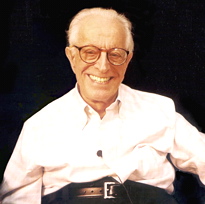
Target article: Kaufman, M. T. (2007, July 25). Albert Ellis, influential psychotherapist, dies at 93. New York Times. Retrieved July 24, 2007 from the New York Times website.
Resources: Albert Ellis Institute | Albert Ellis (@ Wikipedia)